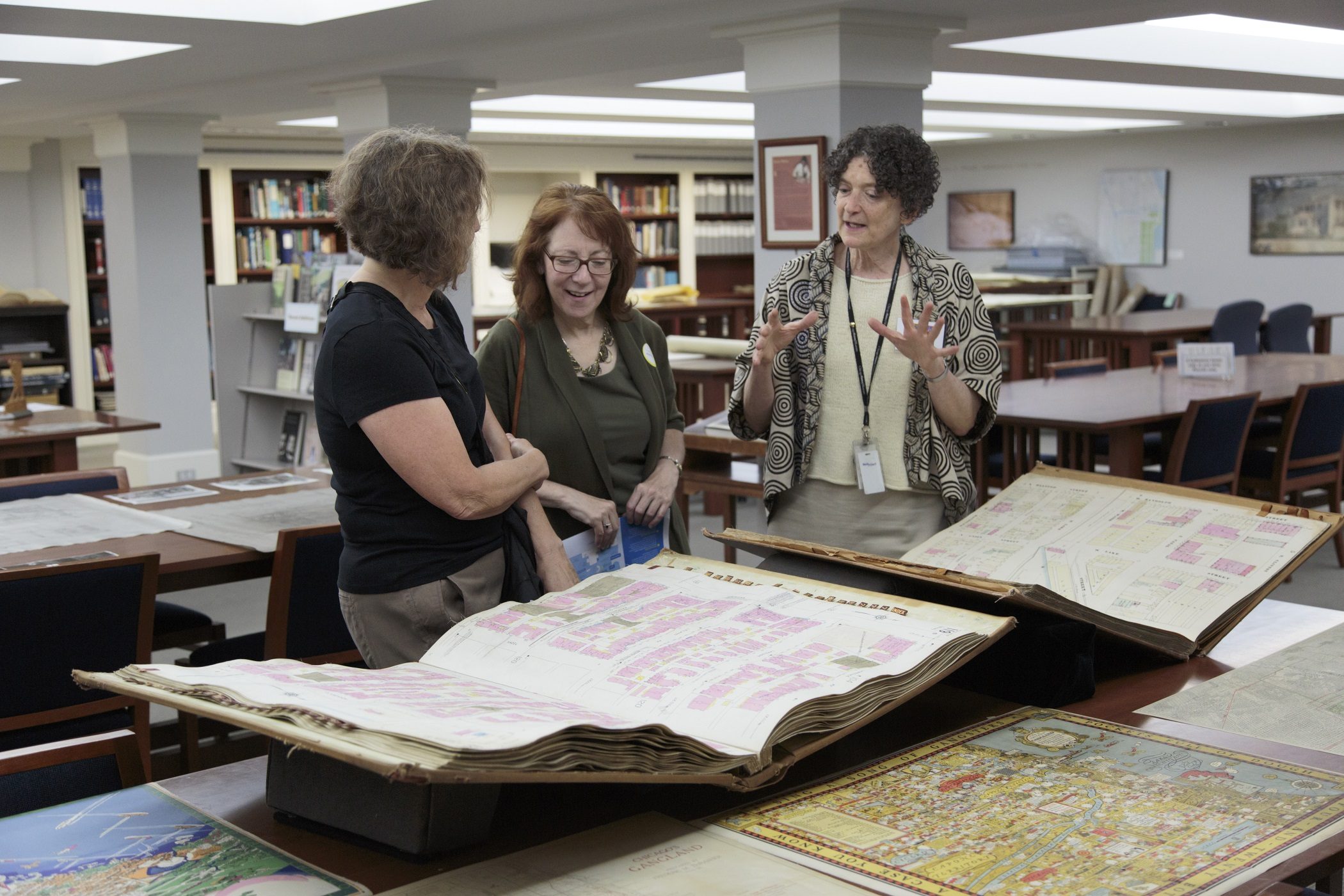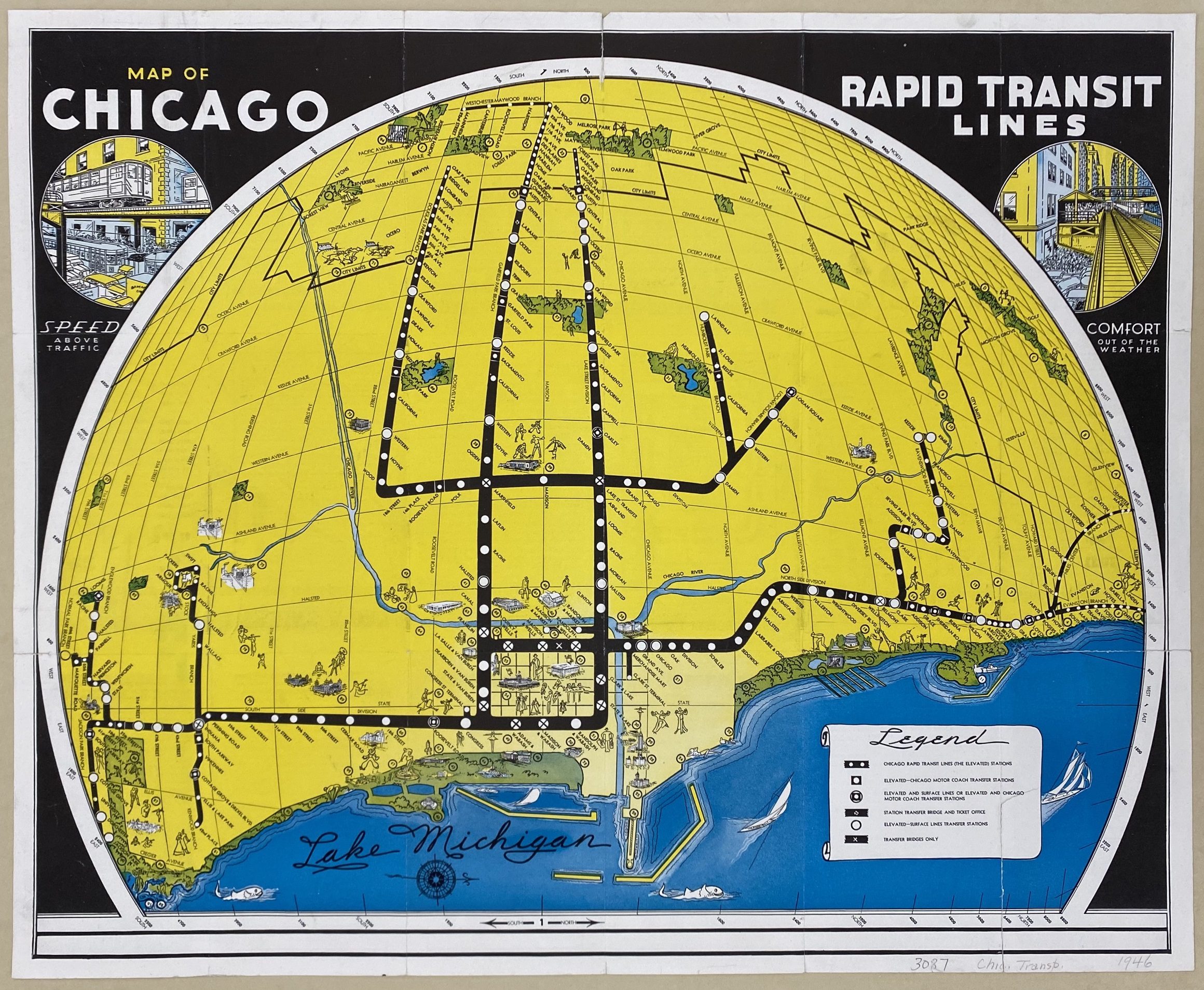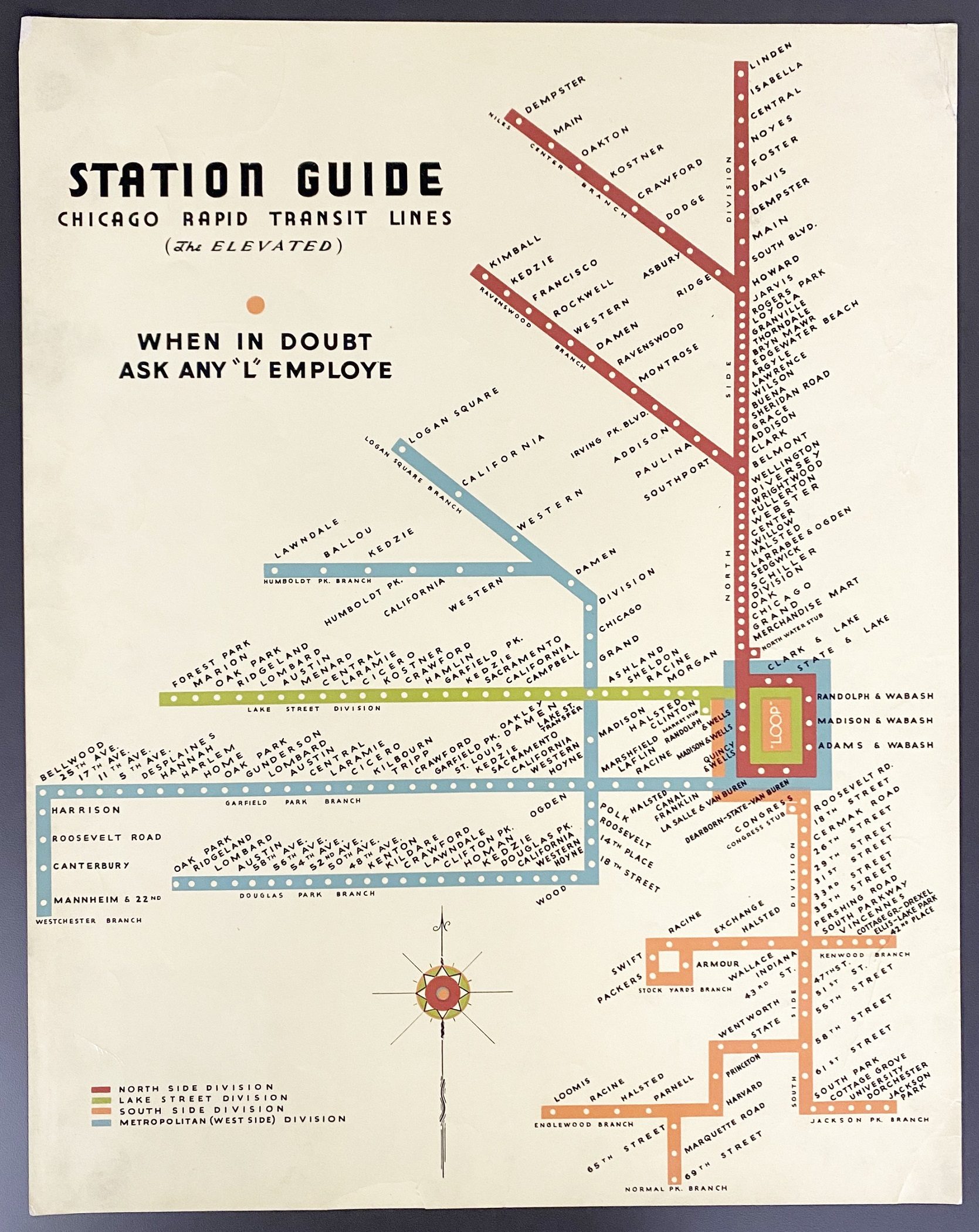After nearly three decades with the Chicago History Museum, CHM reference librarian Lesley Martin is retiring this October. In this special staff spotlight, she reflects on her time as an editor and librarian at CHM.

CHM reference librarian Lesley Martin (right) with patrons in the Abakanowicz Research Center, 2015. All photographs by CHM staff.
How did your career path lead you to the Chicago History Museum?
I came to CHM as a librarian who had left public libraries and was freelancing as a researcher, fact-checker, and indexer. I did several projects in the former Publications Department. (Most unusual assignment—labels for a show on Jockey underwear! [Ed. note: A Brief History: The Jockey Underwear Story, October 2, 1993–January 15, 1994]) In 1995, I was hired as one of the full-time editors. Along with editorial colleagues, I edited exhibition labels and Chicago History magazine articles, proofread invitations, produced CHM’s events calendar, annual reports, etc. It was a great job, but after about five years, a position opened in the Research Center (Ed. Note: Now the Abakanowicz Research Center [ARC]), and I was unable to resist the chance to work directly with the research collections. I had used the 2D collections to do fact-checking and photo research as an editor, but as a reference librarian, I could walk right into the storage areas and explore more fully. Assisting researchers has given me many opportunities to dig into the Museum’s collections.
What’s your favorite part about your job?
The ARC gives individuals the chance to explore their own particular interests in CHM’s collections, and my favorite part of the job is connecting them with what they need. Some researchers may be attempting to verify a family legend; graduate students come looking for materials to support a dissertation topic; moviemakers and set designers want photographs with visual details for a particular era; novelists seek out the circumstances of everyday life in a different time; architects check our collections for blueprints of a commercial building that’s being restored or perhaps converted to condominiums; guides hunt for telling details to include in tours of the city. (This year, the Education Department’s partnership with My Block, My Hood, My City brought in youth guides working on tours of their home neighborhood, North Lawndale.) It’s never dull!

A Chicago Rapid Transit Lines map with a fish-eye style design, 1946.
What’s your favorite artifact?
This changes all the time, depending on what I’m working on. Last month, I was pulling out some transit maps. I am a big fan of public transportation (I haven’t owned a car since my first and only automobile died around 1990.) I love looking at the ways Chicago’s transit has changed over the decades, and also the ways it has stayed the same. And I love looking at how graphic designers have conveyed the information. (Spoiler alert—thanks to a National Endowment for the Humanities grant, many of our pre-1940 maps will be available to view online in fall 2024 through a partnership led by the University of Chicago and including the Newberry Library.)

A Chicago Rapid Transit Lines station guide, 1936.
What will you miss about CHM?
I’ll miss working with colleagues throughout the building, but especially my coworkers in the ARC. I’ll miss the community of researchers who made my job so interesting (and were so helpful—often, as one researcher was asking a question, another might pipe up with a useful contact or suggestion). I guess this is my opportunity to switch sides again—I look forward to coming in and doing research from the other side of the reference desk!
Comments